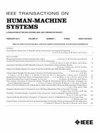情感、感知和视觉特性的分层建模:利用遗传算法优化结构
IF 4.4
3区 计算机科学
Q2 COMPUTER SCIENCE, ARTIFICIAL INTELLIGENCE
引用次数: 0
摘要
要设计产品的 "关西价值",可以通过产品的物理或心理物理特性来设计感知和情感反应的多层关系。然而,由于它们是定性的、模糊的,因此设计模型非常耗时。而且,设计是通过假设和实验者的试错来进行的。在本文中,我们开发了一种基于结构方程建模的方法,通过将遗传算法应用于模型设计,利用对各种材料样本进行图像测量和主观评价实验的结果,自动构建若干半优化结构。在设定的收敛条件下,该方法构建了统计优化结构,这些结构代表了描述感知和情感的形容词与属性之间的关系。通过语义验证确定了最终模型。因此,与相关研究中的方法相比,所提出的方法可用于构建一个在语义和统计上都更优越的模型。本文的一个独特之处是在构建多层模型时使用了通过测量获得的物理和心理物理特性。此外,这种方法的优点还在于可以用来构建可能被忽视的重要结构。本文章由计算机程序翻译,如有差异,请以英文原文为准。
Layered Modeling of Affective, Perception, and Visual Properties: Optimizing Structure With Genetic Algorithm
To design the “Kansei value” aspect of a product, it is useful to design multilayered relationships of perceptual and affective responses via the physical or psychophysical properties of the product. However, because they are qualitative and ambiguous, designing a model is time-consuming. Moreover, the design was conducted by hypothesis and trial-and-error by the experimenter. In this article, we developed a method to automatically construct several semioptimal structures by applying a genetic algorithm to model design based on structural equation modeling, using the results of image measurement and subjective evaluation experiments on various material samples. Under set convergence conditions, the method constructed statistically optimized structures that represent the relationships among adjectives describing perception and affective, and the properties. A semantic validation was performed to determine the final model. As a result, the proposed method could be used to construct a model that can be interpreted as semantically and statistically superior compared to methods in related studies. A unique feature of this article was the use of the physical and psychophysical properties obtained by measurements in the construction of a multilayer model. Also, the advantage of this method is that it can be used to construct important structures that may be overlooked.
求助全文
通过发布文献求助,成功后即可免费获取论文全文。
去求助
来源期刊

IEEE Transactions on Human-Machine Systems
COMPUTER SCIENCE, ARTIFICIAL INTELLIGENCE-COMPUTER SCIENCE, CYBERNETICS
CiteScore
7.10
自引率
11.10%
发文量
136
期刊介绍:
The scope of the IEEE Transactions on Human-Machine Systems includes the fields of human machine systems. It covers human systems and human organizational interactions including cognitive ergonomics, system test and evaluation, and human information processing concerns in systems and organizations.
 求助内容:
求助内容: 应助结果提醒方式:
应助结果提醒方式:


